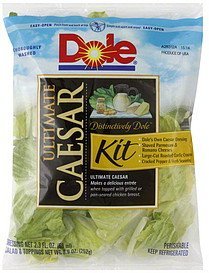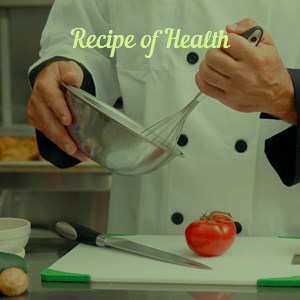Product pictures
| Amount Per 1.5 cups, 100 g | |||
| Calories | 180 Kcal (754 kJ) | ||
| Calories from fat | 126 Kcal | ||
| % Daily Value* | |||
| Total Fat | 14g | 22% | |
|---|---|---|---|
| Saturated Fat | 3g | 15% | |
| Cholesterol | 10mg | 3% | |
| Sodium | 430mg | 18% | |
| Total Carbs | 9g | 3% | |
| Sugars | 2g | 8% | |
| Dietary Fiber | 2g | 8% | |
| Protein | 5g | 10% | |
| Vitamin C | 22.5mg | 38% | |
| Vitamin A | 3.3mg | 110% | |
| Iron | 0.9mg | 5% | |
| Calcium | 100mg | 10% | |
* Percent Daily Values are based on a 2000 calorie diet. Your daily values may be higher or lower depending on your calorie needs.
Find out how many calories should you eat.
Ingredients And Nutrition Overview
Best
choice Good
choice Poor
choice Avoid
it!
choice Good
choice Poor
choice Avoid
it!
-
WeightWatchers Points: 4.4, PointsPlus: 5, SmartPoints: 6
WeightWatchers Points are estimated by carbohydrates, fats, protein and fiber in product. They are not an affirmation of better quality or nutritional value of the product or its manufacturer. Only way to count for dieters. Less points are better.
Read more at Weight watchers diet review -
Much saturated fat
Too much saturated fat raises blood cholesterol, that can increase the risk of heart disease.
This fact has been approved by most health organizations in the world.
You have to limit the intake of it by your recommended daily intake.
Ideally, we should eat less than 10% of calories from saturated fat, so the reference value for an average adult is 24 grams daily.
Remember: a 1-ounce slice of regular cheese has nearly 5 grams of saturated fat.
Read more about fat -
Salty! Has over 18% of the daily sodium max
The average American consumes 5,000 mg of sodium daily — twice the recommended amount amount of 2400mg for healthy adults, this is 1 teaspoon of salt.
For medical reasons many people should not exceed 1500mg of sodium.
Surprisingly, you're responsible for only 15% of the sodium in your diet the bigger part - 75% of the sodium that you consume each day comes from processed foods, not home cooking or the salt shaker.
Excess sodium intake increases the risk of high blood pressure, hypernatremia, hypertension, cardiovascular disease and other heart problems.
Are these reasons enough to cut the sodium intake? No doubt! -
Convert Salt tsps to Sodium mg easily
Salt (NaCl) is not excactly sodium (Na).
It is not right to use these terms as synonyms.
The FDA recommended limit of sodium is 2,300 mg per day (or even less - about 1500 mg while one is on low sodium diets).
This is much less than the weight of salt.
(5,750 mg per day or 3,750 mg for low sodium diet) and not so convenient to calculate.
Know how much sodium is in your salt - without a calculator:
1/4 tsp salt = 600 mg sodium
1/2 tsp salt = 1200 mg sodium
3/4 tsp salt = 1800 mg sodium
1 tsp salt = 2300 mg sodium -
Great! Contains less than 1.5 tsp of sugar.
Great! Contains less than 1.5 tsp of sugar per serving!
-
More than 8% daily fiber!
Eat more fiber. You've heard it many times. But why it is so good for your health?
Dietary fiber is best known for its ability to make our digestion going right.
So want to prevent or relieve constipation - eat more fiber!
There are also other great health benefits as well, such as lowering your risk of diabetes, heart disease and cancer, and helping to maintain a healthy weight by helping to feel you full longer.
The best source of fiber are fruits, vegetables, whole grains and legumes and not processed foods with added fiber. -
A good source of protein
For many vegans and vegetarians, it's important to get enough protein.
The product you've just scanned will provide you with 10% or more of your daily protein requirement.
If you're a vegan having trouble meeting your protein needs, try nuts and beans.
Sprinkling nuts onto any dish is a quick, easy and nutritious solution.
Try adding beans in places you might not normally eat them.
Add beans to pasta dishes, stir fries and even salads.
While meat alternatives like Tofu do provide a quick and easy protein intake, they should not be your only source of protein.
Eat proteins from a variety of sources for best results. -
Naturally high in Vitamin A
You get real, natural easy absorbing Vitamin A from this product, not as an artificial fortified ingredient.
This is great! Let's try to get the best from the real food, because we get too much from artificial ingredients nowdays. -
Learn about veggies and iron
Veggies such as broccoli, bok choy, spinach, parsley and most leafy greens are naturally high in iron.
However, compared to other high-iron foods, like red meat, fish and poultry, the iron in plant foods is not absorbed as easily by the body. What can you do to increase the absorption of iron from these plant foods?
- Vitamin C increases the absorption - so try having a fresh tomato, lemon juice, or an orange together with your high iron food
- Avoid drinking too much coffee - caffeine can decrease the absorption of iron
- In addition to caffeine, the tannins found in tea can also reduce iron absorption
- If you are a vegetarian, try having iron-fortified breakfast cereals, legumes, and eggs
-
Contains MSG-like ingredients
People feeling reaction to MSG may also react adversely to MSG-like substances.
Glutamates or chemically similar items are added to improve a product's taste.
Here is a short list of common MSG-like substances:
- Yeast extract
- Autolyzed yeast
- Hydrolyzed proteins
- Textured proteins
- Anything "enzyme modified"
-
Has EDTA, on FDA's toxicity watchlist
Ethylenediaminetetraacetic acid (EDTA) is a chemical added to certain foods and beverages to keep their color and flavor.
EDTA is known as a persistent organic pollutant. It resists degradation from biological, chemical, and photolytic processes.
It may irritate the skin or cause skin rash and even asthma.
It is is generally recognized as safe by FDA, but is on it's list of food additives to be studied for toxicity.
Allergens
Soy Allergy, Sesame Allergy, Lactose Allergy, Milk Allergy, Fish Allergy, Eggs Allergy, Gluten Allergy, Wheat Allergy
Salad kit ultimate caesar Ingredients
Vegetables: Romaine Lettuce. Dressing: Vegetable Oil (Soybean Oil and/or Canola Oil), Water, Apple Cider Vinegar, Parmesan Cheese (Part Skim Cow's Milk, Enzymes, Cultures, Calcium Chloride, Salt), Garlic, Salt, Sugar, Spices, Anchovie Paste (Anchovies, Salt, Water), Egg Yolks, Natural Flavors, Citric Acid, Lemon Concentrate, Xanthan Gum, Dehydrated Onion, Sodium Benzoate (as a Preservative), Calcium Disodium EDTA (to Protect Flavor). Croutons: Enriched Wheat Flour (Wheat Flour, Niacin, Reduced Iron, Thiamine Mononitrate, Riboflavin, Folic Acid), Canola and/or Olive Oil, Salt, Sugar, Dehydrated Garlic, Maltodextrin, Yeast, Natural Butter Flavor (Contains Milk), Beta Carotene, Ascorbic Acid. Cheese: Parmesan Cheese (Pasteurized Cow's Milk, Salt, Cheese Cultures, Enzymes), Romano Cheese (Pasteurized Cow's Milk, Salt, Cheese Cultures, Enzymes), Potato Starch and Powdered Cellulose (to Prevent Caking), Natamycin (as a Natural Mold Inhibitor). Seasoning: Salt, Spices (Black Pepper, Cumin, Oregano), Dehydrated Garlic, Dehydrated Parsley, Dehydrated Onion, Dehydrated Red Bell Pepper, Partially Hydrogenated Soybean Oil, Natural Garlic Flavor [with Autolyzed Yeast Extract, Natural Butter Flavor (Contains Milk), Caramel Color], Spice Extractive.
You Might Also Like
% RDI of Main Nutrition Facts
9%
of RDI* (180 calories) 100 g
-
Cal: 9 %
-
Fat: 21.5 %
-
Carb: 3 %
-
Prot: 10 %
-
0%25%75%RDI norm*
Calories Breakdown
- Carbs (19.8%)
- Fat (69.2%)
- Protein (11%)
Get Your Recipe of Health!
Follow RecipeOfHealth on Facebook!














Add your comment